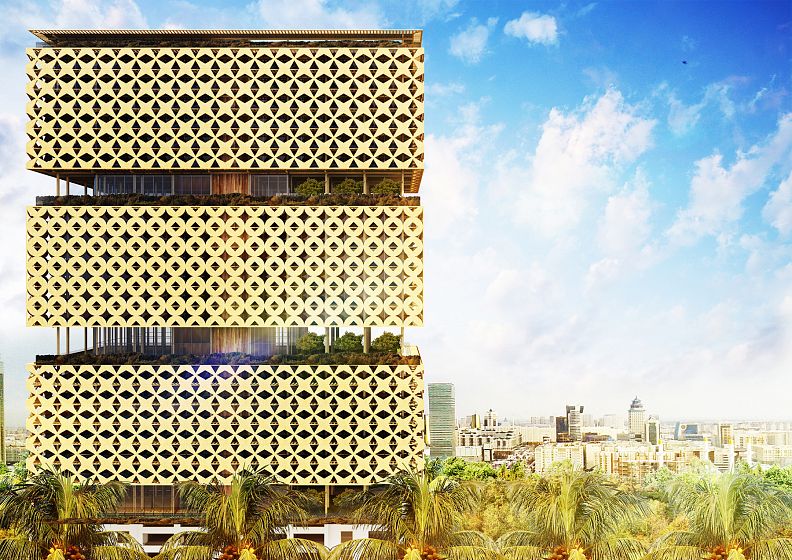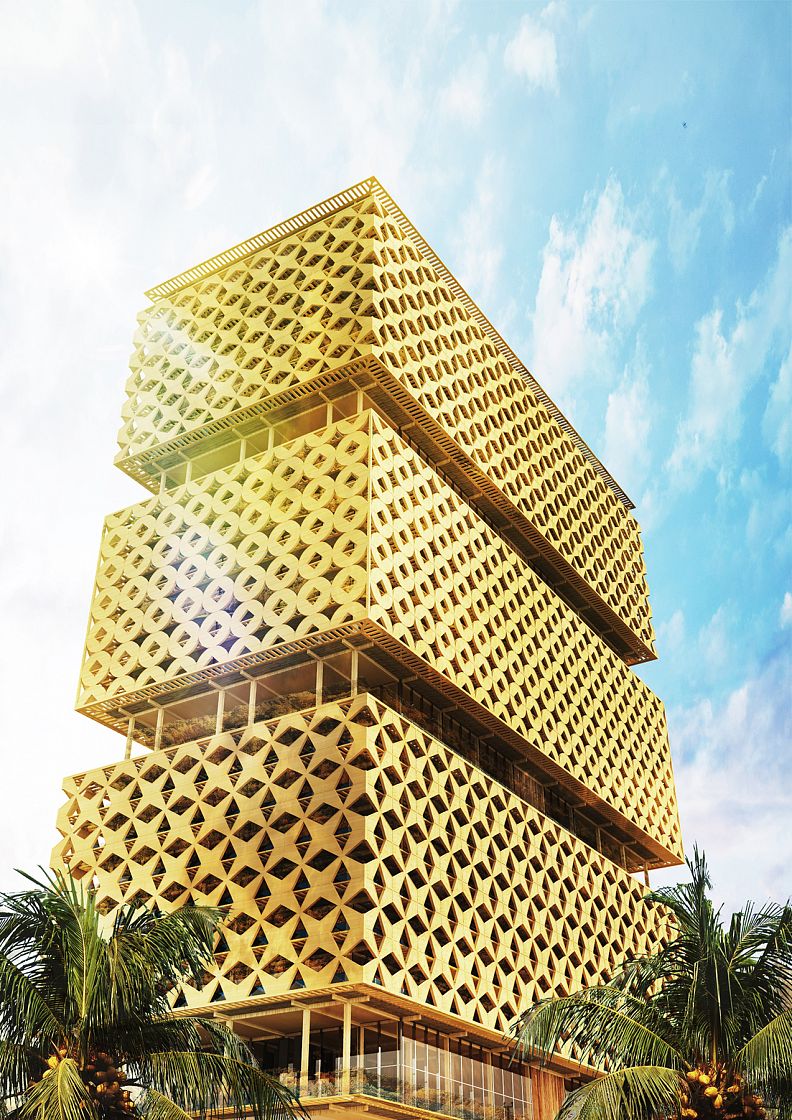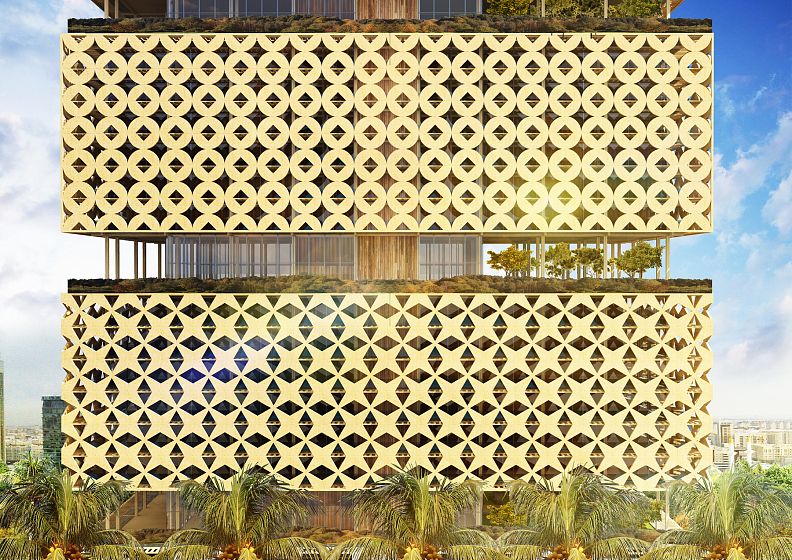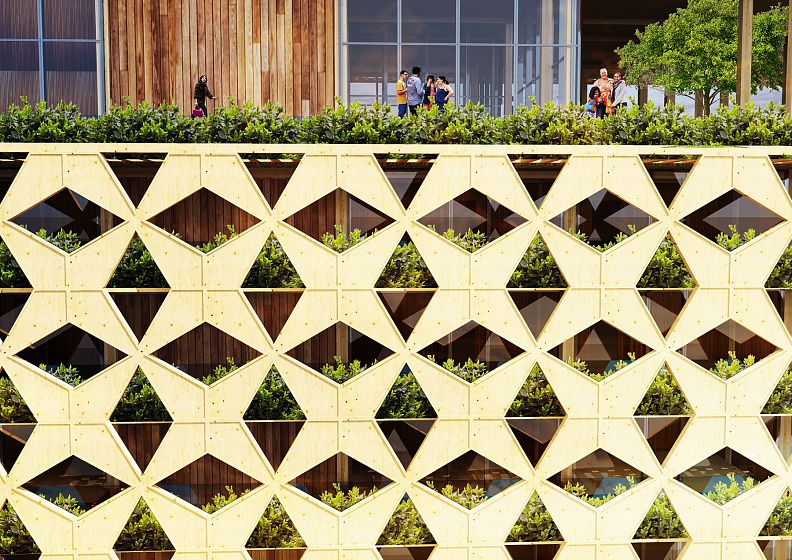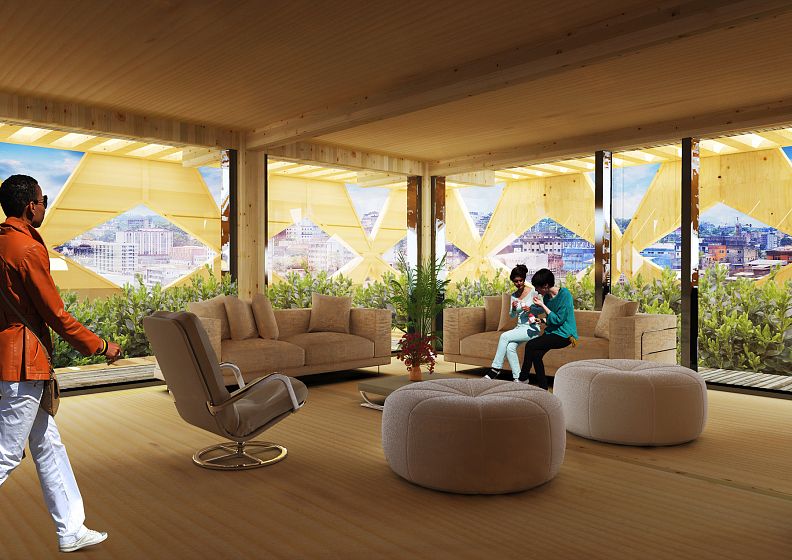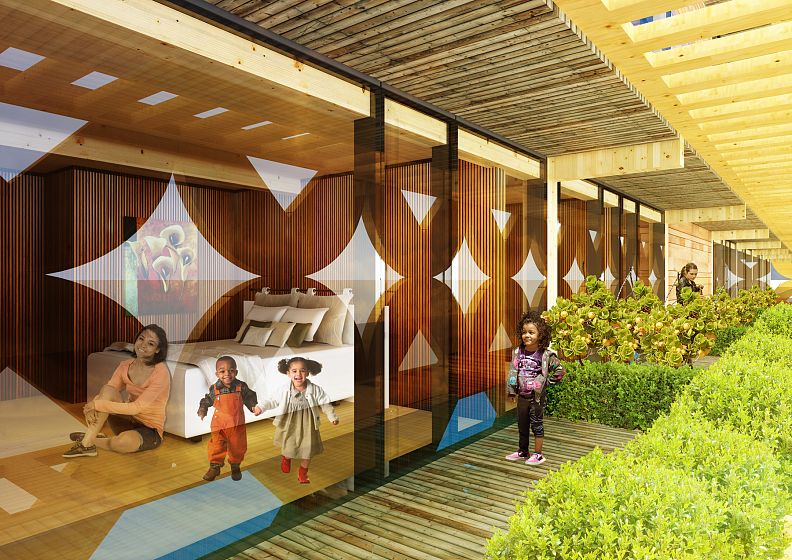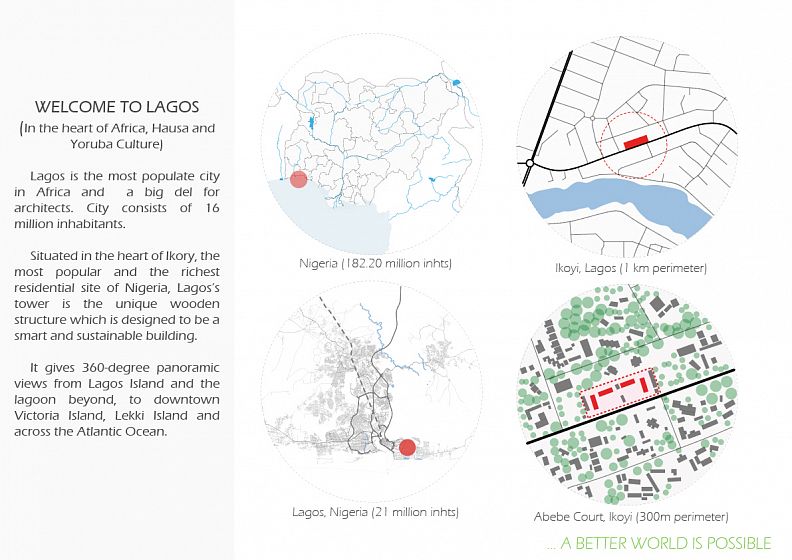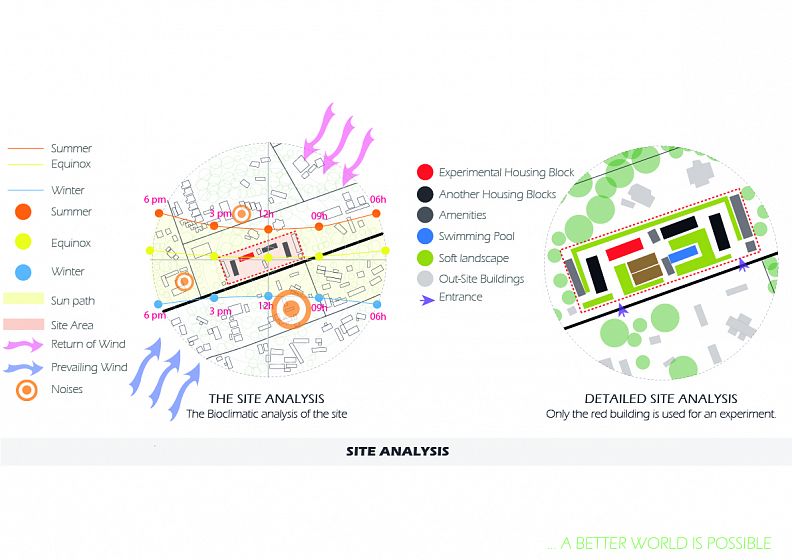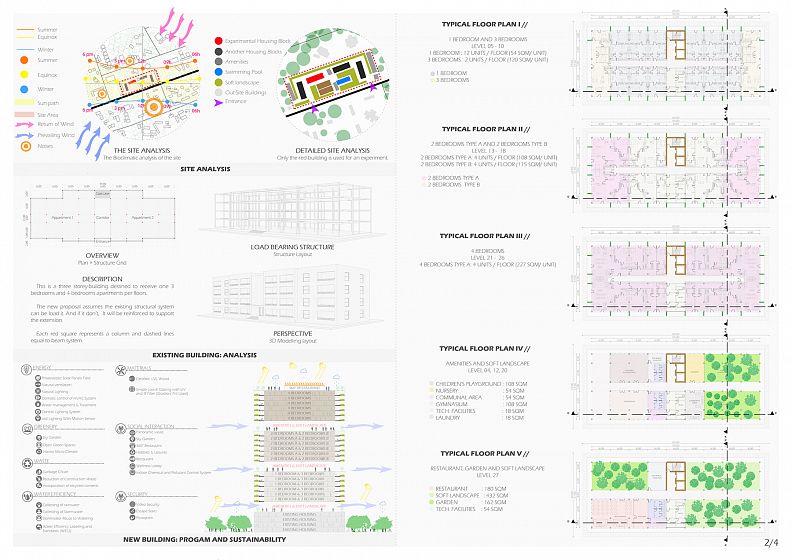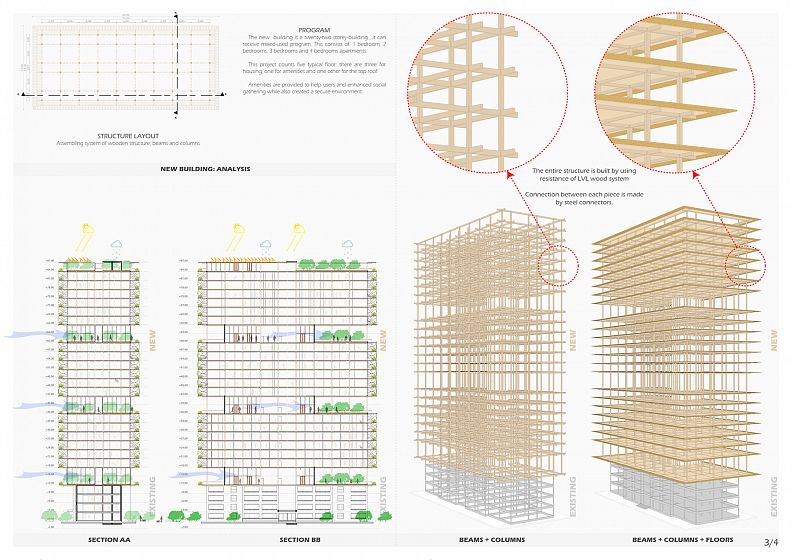Lagos's Wooden Tower

Project idea
Lagos’s Wooden Tower, this project, we made it in Lagos firstly to respond to specific context and finally to initiate a new architectural challenge into African Architecture Community. It is important to understand that the aim of the competition ‘Plan B: The city above the city: Was to imagine how the roofs of today can be transformed into the plots of tomorrow?’ At this time, the big ideas for us, was to create a new generation of the city above the existing with a new type of building.
The project can be seeing in several ways and meaning. The first was to work about the evolution of urbanisation and population growing by creating a new form of urban fabric.
At this moment, we decide to propose a project in Lagos, have you ever been here? Lagos is certainly a beautiful city but also a big deal for architects because urbanisation. What is the future of this kind of city in Africa? At now, we have to analyse, the possibility to build another city above the existing. And the first stage was what king of existing building is appropriated to receive an extension above? The main area of reflection was to extend the city of Lagos in height with a wooden building because of their lightness and sustainability. This is also the possibility to reduce transportation pollution or other kind of pollution and create a well-being environment for people. The tower is a residential complex with can above an existing building ‘Abebe Court’ located on the highbrow Bourdillon Road in Ikoyi with picturesque vegetation. This is a vertical housing estate.
The second action was to understand that not only been one of the most populate cities in Africa and in the world, Lagos contents very big and awesome cultural diversity. Most ethnic of Nigeria and majority present in Africa are living here, because this country has the cultural diversity of this continent. This situation can be sometimes bringing ethnic conflicts. Our idea was to interpret architecture as a monument to the city. As a symbol, architecture may be connecting all the members of the city, people between them and the new building with the older around. Then, the project has to become a new landmark for Lagos, and it has to be interpreted as peace, fraternity, hope, unity and unicity. Divergence is strength not a weakness.
The final step was focus on our architectural contribution by bringing a wood building tower and wood construction technic into a landscape dominated by concrete buildings. Nigeria benefits of the tropical rainforest from the central to the southern part of Nigeria. Lagos is in the south and belongs to the rainforest; why we cannot build in wood? Why continuous to confine our city with concrete? Is it because of technic difficulties? It is because of the cost? Or finally, it is because there’s none interest for wood buildings?
The Lack of wood construction is probably because of these questions and certainly linked to other non-mentioned questions. But, we decide to introduce, the problematic of wood buildings into urban fabric because of their sustainability for the city of the future.
Concerning the tower, the entire structure is built by using resistance of LVL wood system. Wood will be used for load-bearing and non-load bearing structure. Structural feasibility is based on LVL products that will allow us to cross very far-reaching. But, we need to understand, the project is yet as its experimental and study stage. At this step, we show you the process behind the skeleton and the project.
Project description
Lagos Wooden Tower is our entry for an international competition launch by Metsä Wood in 2016. We are certainly satisfied, The Design has been short-listed and it is located in Ikoyi, Lagos (Nigeria). This City consists of 16 million inhabitants, and in the heart of Ikory, one of the most popular residential areas, this tower will be a unique wooden structure, It will be a smart and sustainable building. The project can be tagged as “Greens Cities, Sustainability, Wooden Structure, cultural, residential, Urban Landmark”.
The challenge was “how to build a new city on an existing layer?”. Our Work was focused on the reinvention of a new urban fabric, with sustainable wood building. The main question is “how to create a city above a city?” or “how to use the potential of a flat roof and top roof for our future city?” The special complexity of the project was to study the existing layer and to bring a new approach.
The existing count 4 blocks housing units. Each consists of 4 bedrooms and 3 bedroom apartments distributed on 4 floors. There are some amenities: Swimming Pools, Gymnasium, Tennis courts, Children’s Playground, Parking lots, Borehole and water treatment, Sewage treatment plants and electricity Generator.
Beside of the existing layer, our architecture is organised into three blocks in height, each block is constituted by different layers matrix per floor and there are five typical floor from the top of the existing at the top of the new building. Each block contents six floors which have identic organisation. Each Block is characterised by a particular tribal symbol as the envelope. Blocks are connected by facilities to create a social gathering place for residents. From the bottom to the top, you have a 1, 2, 3 and 4 bedrooms to supply the housing demand of several household characteristic here. The matrix of households in Lagos is so complex because of its density.
Height allows us to benefit of natural elements as ventilation and lighting. Each floor is surrounded by greenery and terrace. The envelope of the building is also a solar breeze, beside it cultural signification. Greenery around the floor, allows us to provide beauty, sensibility, natural, aesthetic and comfort for residents while creating a micro climate into the building and a giant lung to reduce surrounding pollution. The presences of the terrace around the floor allow occupants to benefit from the sky view and help them to be connecting with the city, the beautiful landscape. The beauty is terraces are absent when you looking at the building from exterior. That is the mark of the presence of absence in this architecture. The top roof is a sky restaurant and a sky garden.
Technical information
Project Informations:
Organiser : MetsäWood
Competition : Plan B - The City Above The City
Jury Chairman : Micheal Green
Statut : Shortlisted
Year : 2016
Award :
- Winner: WA Awards 26th Cycle - Designed Category
- 1st Prize Awards: WAFX Prize – Cultural Identity
- Winner: American Architecture Prize 2017 – Green Architecture
- Finalist: World Architecture Festival 2017 (Future Project - Residential)
- 1st Prize Awards: Rethinking The Future Awards 2017 (Residential – Concept)
- Bronze A' Design Award Winner for Architecture, Building and Structure Design Category in 2017
Media : UK Financial Times | CNN | Cargo Collective | V2com |
Designboon | Archdaily | Dezen | The Architectural Review |
The Skyscaper Centre | Büro 247 | Global CTBUH News | Archy |
Techitt | Livin’Space | Apsaildal | Design Indaba | A AS
Architecture | Archiexpo | AECCAFE | World Build 365 |
World Architecture New | World Architecture Festival | Inhabitat |
Design Build Review | Wood Skyscraper | Architect |
Maputo Fast Foward | Econews | Design Ideas | Detour.TV |
Apuntes | CTBUH Journal | Italian Design Institute | Marketopic |
Green Tech | Hyser | Profidom | BAO XAY DUNG | Rinnovabili |
TIN HOT | Barilga | BAO MOI | Trend Hunter | Haw Magazine |
Rethinking The Future | Plattaforma Arquitectura |
World Architecture Community | Building Design + Construction |
Bati Actu | Architectural Digest | Ecozine | etc.
-----------------------------------------------------------------------------------------------------------------
-----------------------------------------------------------------------------------------------------------------
The Specific characteristics are:
Gross floor area (GFA): 40,176 m²;
Gross volume (GV): 135,108 m³;
Site area: 13,000 m²;
Footprint area: 1134 m²
Building height: 87 m
Estimated cost: $300,000,000.
But the challenge was also to build one of the most cheaply wooden structures for a Tower, and why not the most.
Co-authors
HKA | Hermann Kamte & Associates
